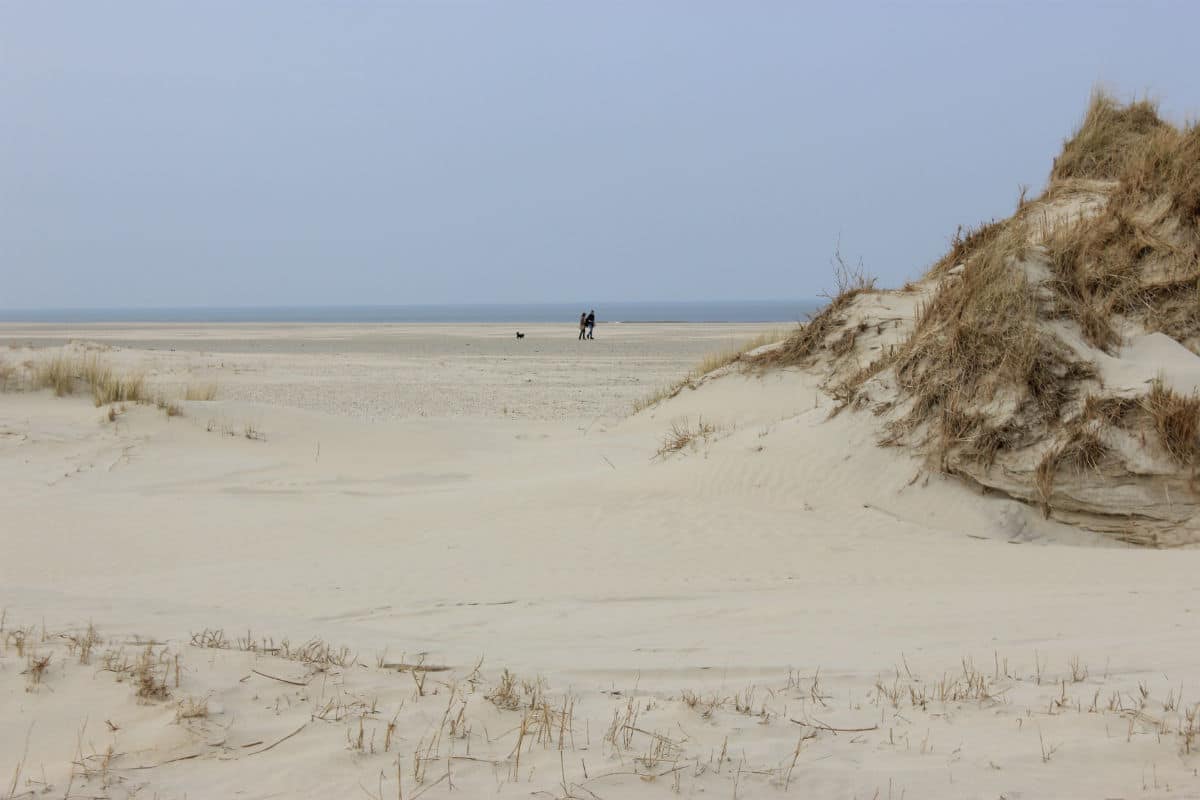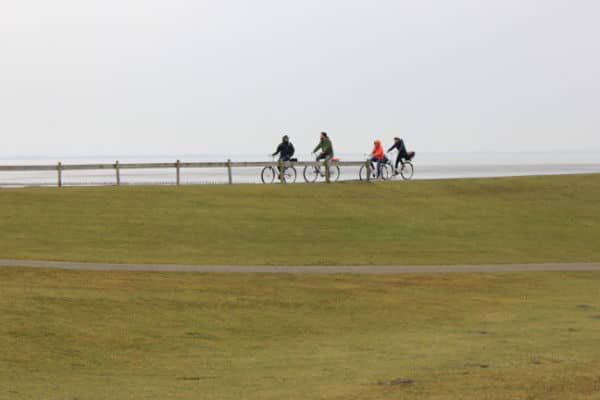
Photo by Wibke Carter
There is a German saying, “Die Reise ist das Ziel”, which freely translates to “The journey is the destination,” and that certainly holds true for a trip to Norderney. After a flight to Hamburg, a four-hour train ride to Norddeich Mole and 45 minutes on a ferry, you’ll finally set foot on the second largest of seven populated East Frisian Islands. Although it’s proudly called “The Queen of the North Sea” by the Germans not many foreigners venture this far north and off the beaten track in Germany.
“Less than 3% of the 530,000 visitors we counted in 2015 were from abroad, mostly Austria, Switzerland and the Netherlands”, says Herbert Visser, Marketing Manager at Tourism Norderney. Maybe this gem of a holiday destination is kept under wraps on purpose. A small island with Michelin starred restaurants, eight miles of white sand beaches, award-winning spa facilities, World Heritage listed nature with unique bird life and tidal flats – if this was your backyard, would you want to share it with anyone else?
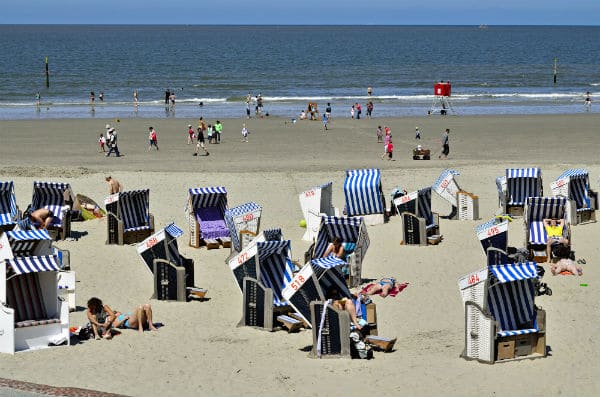
German nobility discovered this special place early on and in 1797 Norderney became first a summer residence for the Royal House of Hanover, then an official retreat for the Kingdom of Prussia. Over the years famous personalities such as Chancellor Otto von Bismarck, composer Robert Schumann and writer Franz Kafka have visited Germany’s first health resort on the North Sea.
When you’re strolling through ‘Lüttje Welt’ (‘Little World’, as the islanders call Norderney because of the way the fog makes it seem like it’s the only place on earth) you’ll notice a number of well preserved buildings belonging to the so-called “Bäderarchitektur”. It’s less an architecture type than a crossover of styles from the Neoclassical, Art Deco and Gründerzeit eras, typical of German seaside resorts. Buildings not to miss in Norderney are the Art Deco Kurtheater from 1893 and the Neoclassical Conversationshaus (1800) which had a ‘facelift’ in 2008, and now houses the tourist office and public library.
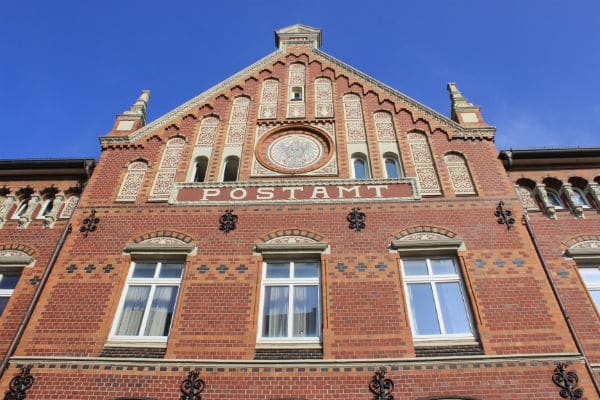
In fact more than 100 historical buildings, including the beautiful Imperial Post Office from 1892, are scattered throughout town and enjoy protected status. Recognizing these buildings as the historical treasures they are, the city has put a lot of resources and efforts into restoring them to their former glory. Examples are the Inselhotel König, Strandhotel Pique, Haus der Schiffahrt (House of Shipping) and residential buildings in the Heinrichstraβe and Moltkestraβe.
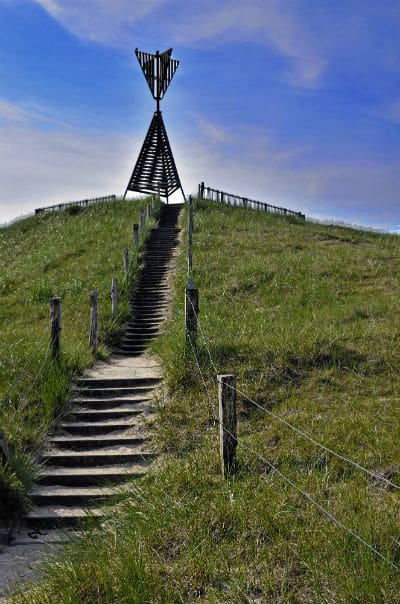
The reason why so many visitors return to Norderney from all over Germany, often annually, can be summarized in one word: Thalasso. The therapy style is based on the healing powers of water, salt, air, silt and algae – all found in abundance on Norderney and in the surrounding Wadden Sea. Those in search of well being can’t get enough of the island’s iodine-scented air and mild maritime climate. More than just a few locals originally settled here to alleviate chronic conditions such as asthma and eczema or to battle rheumatism.
Just being on the island is said to be good for you, four white sand beaches and breezy fresh air can’t be bad for sure, but Norderney also houses one of Europe’s largest Thalasso Centers. Completely refurbished in 2005 and with over 86,000 square feet, the Bade:haus offers different levels featuring sea water pools with varying temperatures, water slides and rain showers. Quiet zones, open air terraces and massage rooms round out this exceptional wellness experience which was recognized as the “Best Public Bath” by the European Health & Spa Awards 2015.
When you’re done relaxing, it’s time for some exercise. Water, wind, waves and light have created a unique landscape on Norderney which is best discovered walking along the dunes and on the deserted beaches on the east side of the island. Despite the thousands of tourists every year not many find their way to this ever changing environment. There are three different types of dunes on Norderney: the white ones closest to the sea, and the grey and brown ones in the center of the island where plants such as the sea buckthorn grow.
More than 80% of Norderney is protected as part of the Lower Saxony National Park within the much larger UNESCO World Heritage Site of the Wadden Sea, the largest unbroken system of intertidal sand and mud flats in the world. On the way to the park stop at the red brick lighthouse for a fantastic view from the top. Built between 1871 and 1874, the lighthouse is located right in the center of Norderney and is the tallest building on the island with 253 steps leading to a fenced passage around the spire.
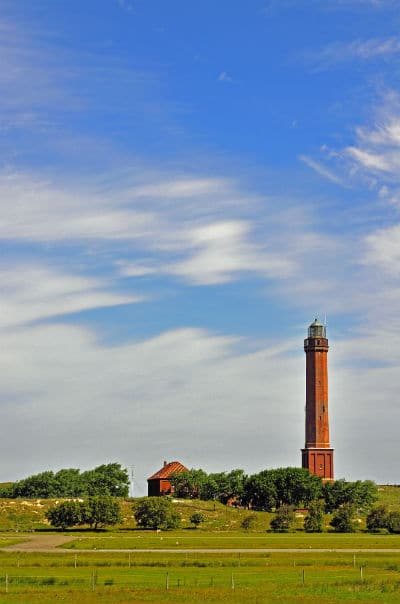
You’ll get there by foot only after the Osterheller car park where a 3.7 mile walkway leads to the eastern end of Norderney, though walkway might be stretching it a bit for the wooden poles sticking out of the ground. It’s a good idea to stay on the path as yellow signs warn of the danger of quicksand. Another point of orientation is the pyramid-shaped Postbake on top of the Möwendüne (sea gull dune) which can be seen from far away. It’s original purpose was to guide the horse-drawn postal carriages which had to find their way to the island from the mainland as early as 1863.
While walking you’ll come across countless rabbits which outnumber the two-legged islanders by 5:1. The fluffy animals were first brought to the island in 1620 as hunting prey for the German nobility. Needless to say that after their original release there was never a shortage of rabbits again. While natural burrows in the national park are their preferred habitat, space ran out quickly and you’ll probably see some long ears poking out behind bushes in the hotel gardens and parks.
After reaching the far eastern point of Norderney, you’ll see the next East Frisian Island, Baltrum, with its red brick houses, less than a half-mile away. Buried deep in the sand and marked with graffiti lies the rusty wreck of the “Capella”. The mussel digger got stranded here in 1968 while trying to help another ship and was abandoned after an unsuccessful recovery mission.
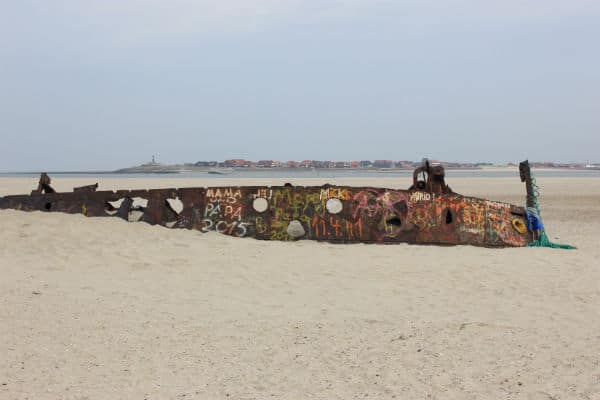
Photo by Wibke Carter
Returning via the wide, shell covered beach, it’s a little over six miles to the “Weisse Düne”, a popular restaurant built from wood and with an interior fireplace where you can warm up in winter or watch the surfers in summer.
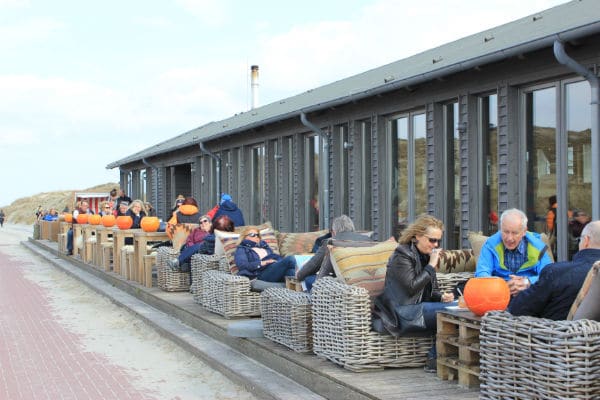
Typical dishes to try here (or in any of the restaurants on Norderney) include all sorts of fish and seafood fresh from the trawler. The cuisine has a strong maritime influence and, believe it or not, kale is a household staple, though it’s anything but hip. Long before the healthy green made its way into trendy restaurants in New York and beyond, it was eaten all over Germany predominantly in combination with potatoes, oats, cabbage, sausages and lard, thus being considered a “poor peoples’ dish”. Helping people through the long, cold winters, kale was traditionally harvested after the first frost when all other vegetables became scarce. Still not hugely popular in Germany, 75% of the harvest is sold frozen or in jars while in the US, 95% of the greens are sold in their fresh, raw state.
When it comes to a typical drink to have, you won’t be able to ignore the bright orange sea buckthorn liqueur which is sold in souvenir stores, supermarkets and restaurants up and down the island. The berry itself is actually pretty sour, but the liqueur will make you want to lick your glass. Up until the late 20th century only birds fed off the fruit trees but then in the 1990s the “lemon of the north” was discovered as a viable food option. Today, sea buckthorn is sold as jam, paste and syrup and added in various forms to yogurt, muesli or porridge. Additionally, it’s used in cosmetic and skin care products like oils and moisturizers.
Time on the island falls into a gentle rhythm of spa treatments, nature walks, exercise, shopping, good food and cocktails at night. But make sure to visit sooner rather than later as Norderney’s days could be numbered. Much like its neighbors in the North Sea it’s under siege by the ruthless storm tides eroding its beaches and shoreline. The locals are desperately trying to stop the clock on this evolving vanishing act by erecting dikes and other barriers. Regardless, until only a foot of beach remains, they believe there’s no better place to live. www.nordeney.de
The country code for Germany is 49 and the local dialing code is 4932.
Where to Stay:
Inseloft Norderney – Stylish Spa Hotel with sea views from four listed buildings dating from the late nineteenth century. Thirty-four rooms combine traditional charm with fresh, inventive design. Damenpfad 37-40, Norderney, +49 4932 893 800; www.inselloft-norderney.de
Seesteg – Gorgeous German efficiency with a combination of natural materials and modern design. A rooftop pool with a view of the North Sea, a gourmet restaurant, a spa and 16 luxury rooms right next to the sea. Damenpfad 36A, Norderney, +49 4932 893 600; www.seesteg-norderney.de/en/
Hotel König – Modern four-star hotel dating from 1868. Centrally located 4 minutes by foot from the beach with an onsite spa. Bülowallee 8, Norderney, +49 4932 8010; www.inselhotel-koenig.de
Where to Eat:
Weisse Düne – Amongst remote white dunes, this beach restaurant serves casual food like a home-style beach burger or potato soup and shrimps during the day, and an unforgettable gourmet dining experience at night. Weisse Düne 1, Norderney, +49 4932 935 717; www.weisseduene.com
Cornelius – Restaurant and oyster bar with typical North Sea dishes like lobster, sole, turbot and matjes (pickled herring) on the menu, but with Mediterranean influence. Highly recommended is the “Friesen-Sushi”. Am Nordstrand 3, Norderney, +49 4932 935 111; www.cornelius-nordeney.de
Esszimmer – Long wooden communal tables have a view to the kitchen. A weekly changing menu focuses on unusual “food pairings” such as plaice with risotto, pear, beans and walnut. Cooking classes are also available. Damenpfad 37-40, Norderney, +49 4932 893 800; www.inselloft-norderney.de
What to Do:
Bade:haus – Germany’s largest thalassotherapy center. Experience different swimming pools on the water level, and saunas and treatments like mud bath, massages and wraps, on the fire level. www.norderney.de/badehaus-norderney.html
Cycle hire – Cycle on 16 miles of easy, flat paths through town, along the dunes and on top of the dikes. Available from many places on the island. www.norderney.de/aktiv/laufen-radfahren.html
Hire a Guide – Hire a private guide for a walk through the tidal flats in the Wadden Sea. Guides can be arranged through the tourist office. www.norderney.de
Sunset at Milchbar – Enjoy Happy Hour on the promenade and watch the sun go down over the North Sea. www.milchbar-norderney.de
Watt Welten Nationalpark-Haus – Opened in 2015, this innovative natural museum provides information on the Wadden Sea and its many inhabitants. www.nationalparkhaus-wattenmeer.de/nationalpark-haus-norderney

